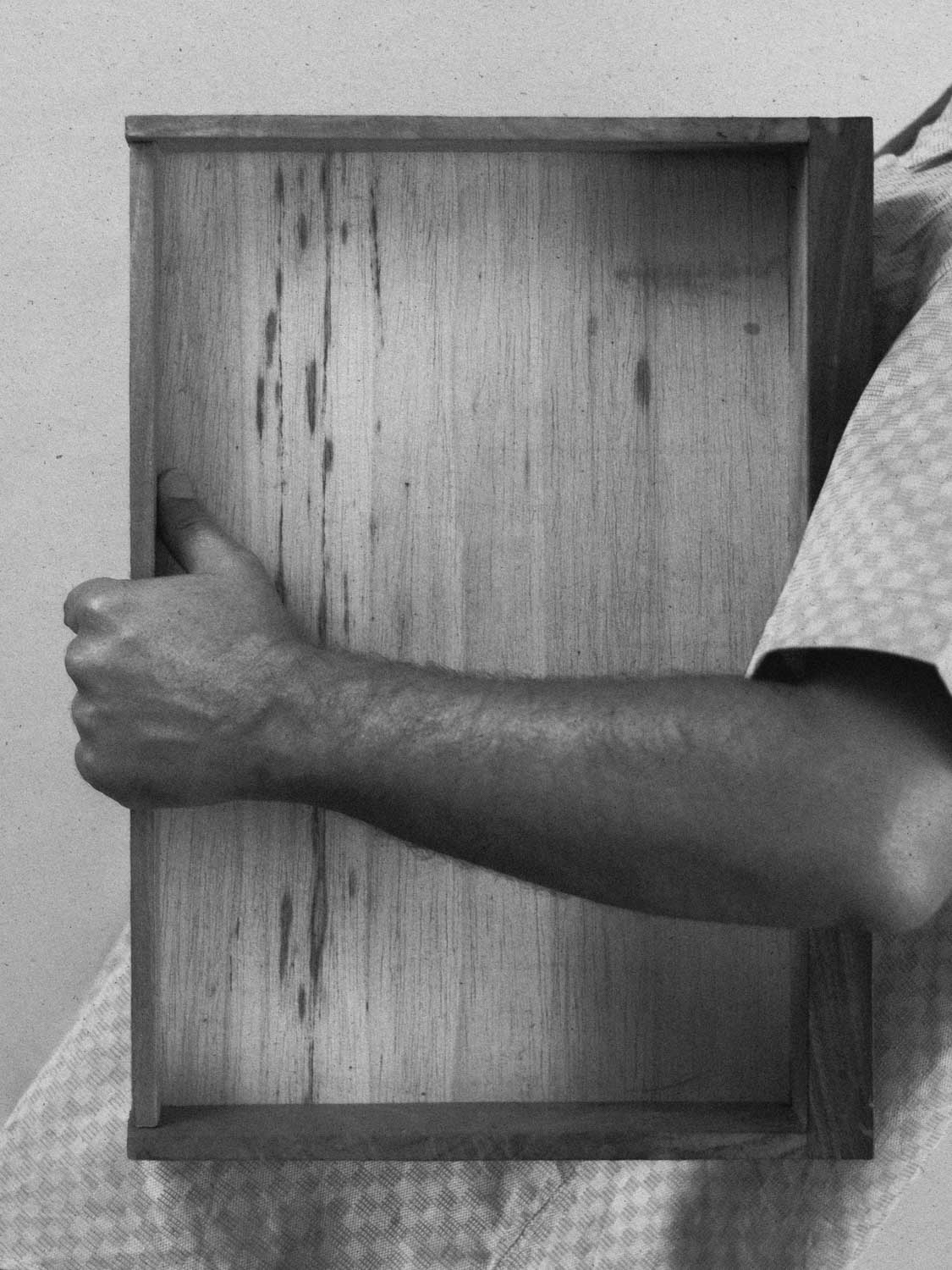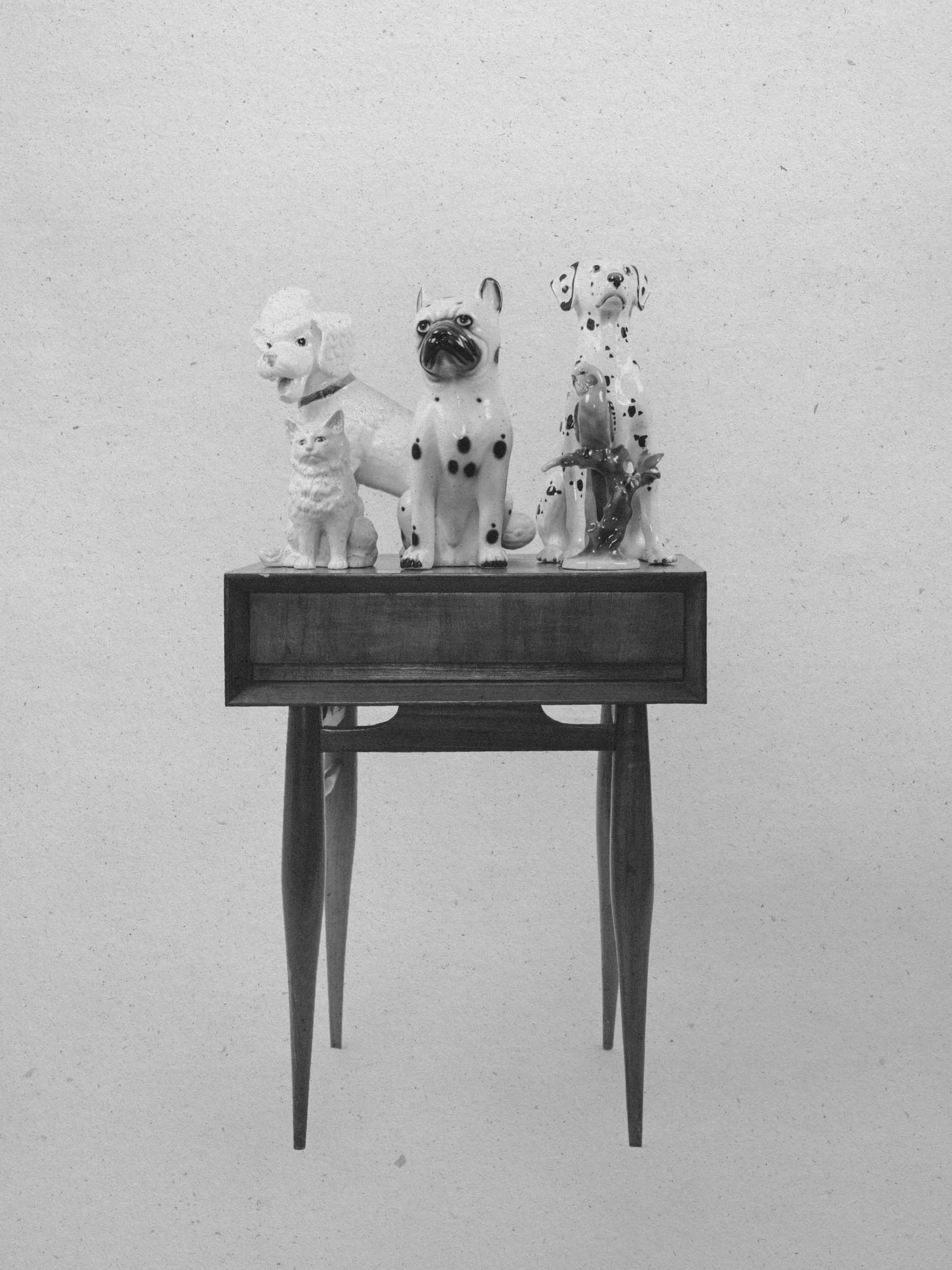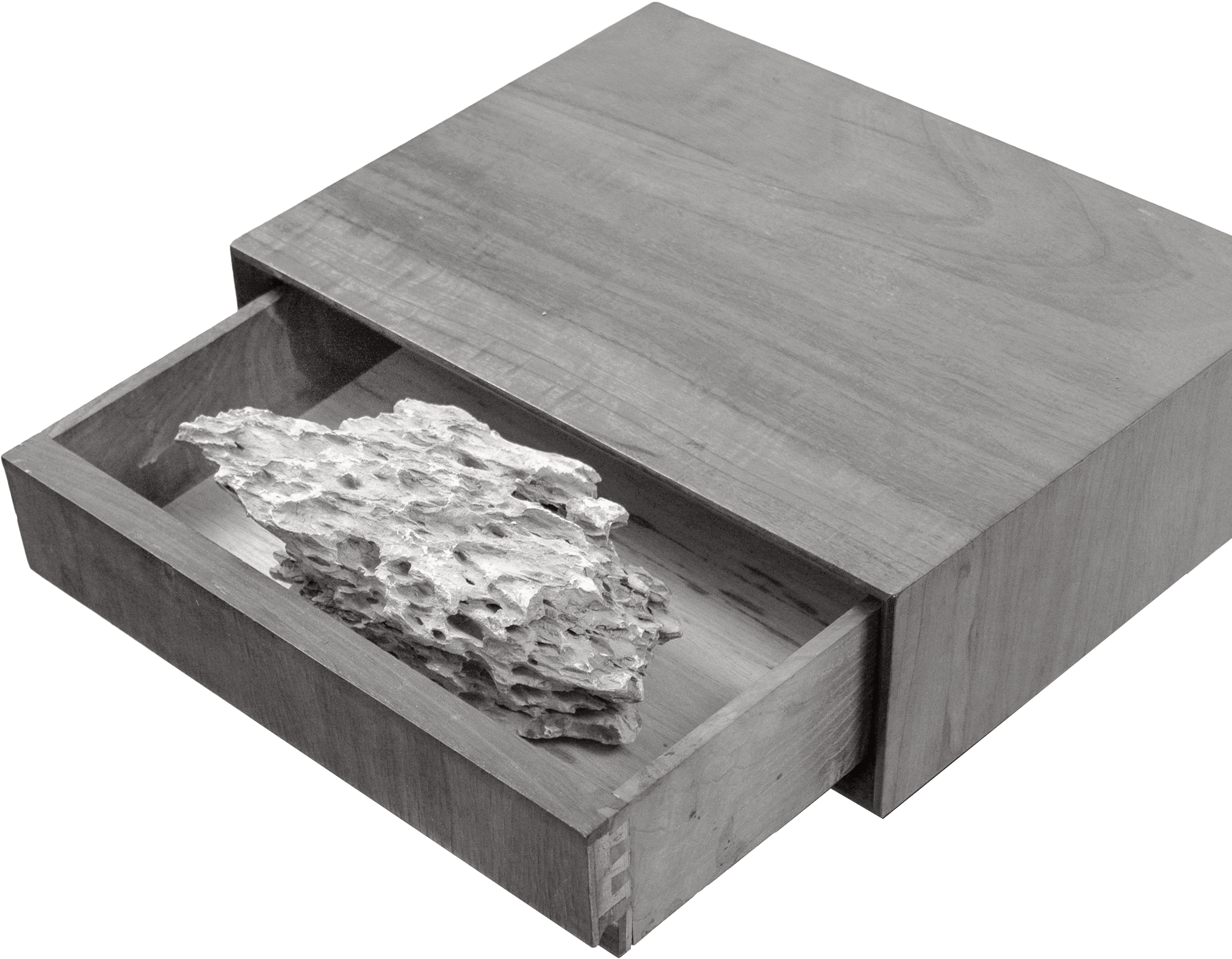“The transition between awakening and sleep presupposes a break in the state of wakefulness. There, in that space of time, the possibilities become infinite”. This is the idea behind The Bedside Table Project, conceived by the artist Pedro Valdez Cardoso to grant several artists the opportunity to make use of one of the most intimate spaces that we have in our homes: the drawer of the bedside table. Thus, during one year, Valdez Cardoso has invited 24 artists to create or think of an object that will be placed in his bedside drawer. These objects will be shown fortnightly on the site built especially for the project. On the table there is a vase that throughout the year will contain the different bouquets of flowers meant to accompany each of the works. In Pedro’s artistic practice, there is an evident connection between flowers and the digital. And, on the Instagram account he since opened, he has begun a virtual photographic and aesthetic relationship with the flowers, photographing and publishing all those which have been welcomed into his home.

Elsa Garcia
Is The Bedside Table Project your artistic response to the pandemic? How did the project come about?
Pedro Valdez Cardoso
I can’t say it’s a response to the pandemic. The project arose during the lockdown because my artistic practice came to a halt, and as the days went on, I found myself reflecting on what I would like to do. Putting together or giving a platform to projects other than mine was always something I wanted to do, but I never got round to it for lack of time. Being stuck at home, I started thinking about what I could create from my surroundings. I also thought of the smallest exhibition space possible that resonated deeply with the intimate, domestic side to my nature and my own experience. It is a very personal project. The bedside table where the works will be placed is my actual bedside table.
ELSAIt’s one of the most intimate pieces of furniture in our homes.
PEDROYes. I like the idea of it being in the bedroom, next to the bed, which is also the space of sleeping and dreaming, and in that sense, it transcends reality and the material world. Besides this, I’m very fond of the flowers’ connection to the project. I really like interior decoration. I always have fresh flowers at home, and I wanted the project to also reflect my own way of being at home and experiencing the house, in order to make it pleasant for me to be there.
ELSAEspecially during the lockdown.
PEDROExactly.
ELSAWhen you couldn’t go out to buy flowers!
PEDROThat’s right. I didn’t have flowers at home during that time. And, perhaps also because of this, I decided to include them in the project.
ELSADid the absence of flowers make them play an even more relevant role in The Bedside Table?
PEDROYes, but not only that. Flowers have an ephemeral quality to them. Their life is short and I also appreciated this contrast between the ephemeral and the artistic object, which tends to last much longer and be more permanent.
Is The Bedside Table Project your artistic response to the pandemic? How did the project come about?
Pedro Valdez Cardoso
I can’t say it’s a response to the pandemic. The project arose during the lockdown because my artistic practice came to a halt, and as the days went on, I found myself reflecting on what I would like to do. Putting together or giving a platform to projects other than mine was always something I wanted to do, but I never got round to it for lack of time. Being stuck at home, I started thinking about what I could create from my surroundings. I also thought of the smallest exhibition space possible that resonated deeply with the intimate, domestic side to my nature and my own experience. It is a very personal project. The bedside table where the works will be placed is my actual bedside table.
ELSAIt’s one of the most intimate pieces of furniture in our homes.
PEDROYes. I like the idea of it being in the bedroom, next to the bed, which is also the space of sleeping and dreaming, and in that sense, it transcends reality and the material world. Besides this, I’m very fond of the flowers’ connection to the project. I really like interior decoration. I always have fresh flowers at home, and I wanted the project to also reflect my own way of being at home and experiencing the house, in order to make it pleasant for me to be there.
ELSAEspecially during the lockdown.
PEDROExactly.
ELSAWhen you couldn’t go out to buy flowers!
PEDROThat’s right. I didn’t have flowers at home during that time. And, perhaps also because of this, I decided to include them in the project.
ELSADid the absence of flowers make them play an even more relevant role in The Bedside Table?
PEDROYes, but not only that. Flowers have an ephemeral quality to them. Their life is short and I also appreciated this contrast between the ephemeral and the artistic object, which tends to last much longer and be more permanent.

ELSAThe Bedside Table can only be experienced online, which makes Fábio de Carvalho and Raquel Melgue of the OH ! MANA, the studio that designed the website, key elements in this project.
PEDROYes, the website is an extension of the project and they play a decisive role.
ELSAThe website also turns out to be a work of art.
PEDROExactly. They managed to understand my ideas and came up with a website exactly as I had imagined it. In fact, this whole project is an extension of my artistic practice and my work.
ELSAIt’s a conceptual project which involves an artistic intervention, because in truth we have here an artistic project that derives from this idea and from the work of other artists.
PEDROExactly, although I do not have any say in what they do.
ELSALet’s go back to the flowers.
PEDRO(laughs)
ELSADo the artists give you the flowers directly or do they tell you the name and then you go and buy them?
PEDROI buy the flowers myself. Although the project is so simple and appears to be so unassuming, it has complex logistics concerning its dynamics and the ease of photographing the works . I buy the bouquets, they are photographed and then I take them home. The house will be full of flowers for a year.
ELSAThere’s also going to be posters made inspired by the scientific name of the flowers. What will these be like?
PEDROThe posters will also be created by the OH ! MANA team. They’ve already thought about the concept, I’ve accepted it and I really liked the idea. They will be graphic posters, A2 size, with an edition of twenty copies each.
ELSAWith this project, are you distancing yourself from your role as an artist and becoming a curator?
PEDROYes and no. I do not consider myself a curator. The term curator implies many other questions. When I invite artists, there is one thing that is common to each of them: I have to like their work, otherwise I wouldn’t invite them. But then what makes it even more interesting is that, knowing the work of each artist, I start to imagine what they’ll come up with. It’s this range of possibilities that often leads me to invite them. Whether it’s because I think the artistic practice of some already reflects an interest in the domestic side of things, or because their work is associated with something more monumental.
ELSAI’m curious to hear about your experience seeing the project through. How it has helped you to deal with the current situation and your reflections before, and after having received some of the works. What were your reactions to them and how has your experience of their presence in your life been?
PEDROI think the artists have responded in different ways to the space. Some think about the drawer as a place where something can be hidden, part of the intimate, one’s personal life, while others have seen it as an alternative means for showing what they do. I give total freedom to the artists and until now (September) it has always been a pleasant surprise. Besides the works themselves, it has been quite intriguing and interesting to see what flowers each artist chooses.
ELSAHow are you reacting to the choice of flowers and their relationship with the work of art?
PEDROSome artists are establishing a conceptual link between the flower and the context of the work. Others choose the flower they like best. So far, I really like all the chosen flowers. In most cases, if it were my project, I’d likely end up choosing the same flower, which is quite odd.
ELSAAnd what is your favourite flower?
PEDRO(laughs) There’ve been several and I’m always changing my mind. Liliums, calla lilies and blood lilies are the ones I like most at home.
PEDROYes, the website is an extension of the project and they play a decisive role.
ELSAThe website also turns out to be a work of art.
PEDROExactly. They managed to understand my ideas and came up with a website exactly as I had imagined it. In fact, this whole project is an extension of my artistic practice and my work.
ELSAIt’s a conceptual project which involves an artistic intervention, because in truth we have here an artistic project that derives from this idea and from the work of other artists.
PEDROExactly, although I do not have any say in what they do.
ELSALet’s go back to the flowers.
PEDRO(laughs)
ELSADo the artists give you the flowers directly or do they tell you the name and then you go and buy them?
PEDROI buy the flowers myself. Although the project is so simple and appears to be so unassuming, it has complex logistics concerning its dynamics and the ease of photographing the works . I buy the bouquets, they are photographed and then I take them home. The house will be full of flowers for a year.
ELSAThere’s also going to be posters made inspired by the scientific name of the flowers. What will these be like?
PEDROThe posters will also be created by the OH ! MANA team. They’ve already thought about the concept, I’ve accepted it and I really liked the idea. They will be graphic posters, A2 size, with an edition of twenty copies each.
ELSAWith this project, are you distancing yourself from your role as an artist and becoming a curator?
PEDROYes and no. I do not consider myself a curator. The term curator implies many other questions. When I invite artists, there is one thing that is common to each of them: I have to like their work, otherwise I wouldn’t invite them. But then what makes it even more interesting is that, knowing the work of each artist, I start to imagine what they’ll come up with. It’s this range of possibilities that often leads me to invite them. Whether it’s because I think the artistic practice of some already reflects an interest in the domestic side of things, or because their work is associated with something more monumental.
ELSAI’m curious to hear about your experience seeing the project through. How it has helped you to deal with the current situation and your reflections before, and after having received some of the works. What were your reactions to them and how has your experience of their presence in your life been?
PEDROI think the artists have responded in different ways to the space. Some think about the drawer as a place where something can be hidden, part of the intimate, one’s personal life, while others have seen it as an alternative means for showing what they do. I give total freedom to the artists and until now (September) it has always been a pleasant surprise. Besides the works themselves, it has been quite intriguing and interesting to see what flowers each artist chooses.
ELSAHow are you reacting to the choice of flowers and their relationship with the work of art?
PEDROSome artists are establishing a conceptual link between the flower and the context of the work. Others choose the flower they like best. So far, I really like all the chosen flowers. In most cases, if it were my project, I’d likely end up choosing the same flower, which is quite odd.
ELSAAnd what is your favourite flower?
PEDRO(laughs) There’ve been several and I’m always changing my mind. Liliums, calla lilies and blood lilies are the ones I like most at home.

ELSADo you think that the pandemic has led to more reflection and a slowdown or are we in a more digital and accelerated world?
PEDROI think there has been a slowdown on several levels, especially in our social life. As for digital, the exact opposite has happened, where it has proved to be an alternative to several things that used to happen beyond the virtual space. It became a way to escape and to allow certain things to continue to exist.
ELSAConsidering this troubled and uncertain period, has this project helped you enjoy being at home more, as well as making the experience a distraction from the new ‘abnormal’?
PEDROYes, my four walls became suffocating during the lockdown. With this project, besides the flowers, I’m bringing home works of artists who I follow and whose exhibitions I go see. Suddenly, by allowing them into my intimate space, they become part of my daily life.
ELSANietzsche knew that human life would end up doomed to hyperactivity if the ability to contemplate were lost. With this project, although you present it to the public in digital format, the act of observing a work created for a bedside table implies contemplating the piece and its relationship with the flower.
PEDROYes, I wholeheartedly agree. Contemplation is what makes us stop. And, as the work always appears in the drawer, there is also this idea associated with it of the act of discovering something. Normally, a drawer is closed, and we don’t know what’s inside. This project is a kind of reflection of the idea of secrecy.
ELSAYes, bedside tables are full of secrets. We have already said that they are very intimate spaces, where people place all kinds of objects. Have you ever received any more outré work?
PEDROI have, the project of Susana Mendes Silva. It’s a tongue coming out of a vulva. A very beautiful piece in pink plasticine.
PEDROI think there has been a slowdown on several levels, especially in our social life. As for digital, the exact opposite has happened, where it has proved to be an alternative to several things that used to happen beyond the virtual space. It became a way to escape and to allow certain things to continue to exist.
ELSAConsidering this troubled and uncertain period, has this project helped you enjoy being at home more, as well as making the experience a distraction from the new ‘abnormal’?
PEDROYes, my four walls became suffocating during the lockdown. With this project, besides the flowers, I’m bringing home works of artists who I follow and whose exhibitions I go see. Suddenly, by allowing them into my intimate space, they become part of my daily life.
ELSANietzsche knew that human life would end up doomed to hyperactivity if the ability to contemplate were lost. With this project, although you present it to the public in digital format, the act of observing a work created for a bedside table implies contemplating the piece and its relationship with the flower.
PEDROYes, I wholeheartedly agree. Contemplation is what makes us stop. And, as the work always appears in the drawer, there is also this idea associated with it of the act of discovering something. Normally, a drawer is closed, and we don’t know what’s inside. This project is a kind of reflection of the idea of secrecy.
ELSAYes, bedside tables are full of secrets. We have already said that they are very intimate spaces, where people place all kinds of objects. Have you ever received any more outré work?
PEDROI have, the project of Susana Mendes Silva. It’s a tongue coming out of a vulva. A very beautiful piece in pink plasticine.
